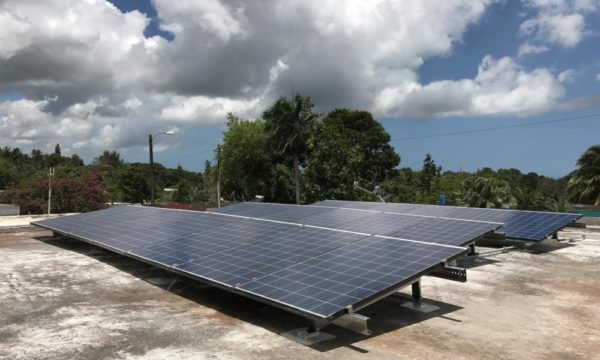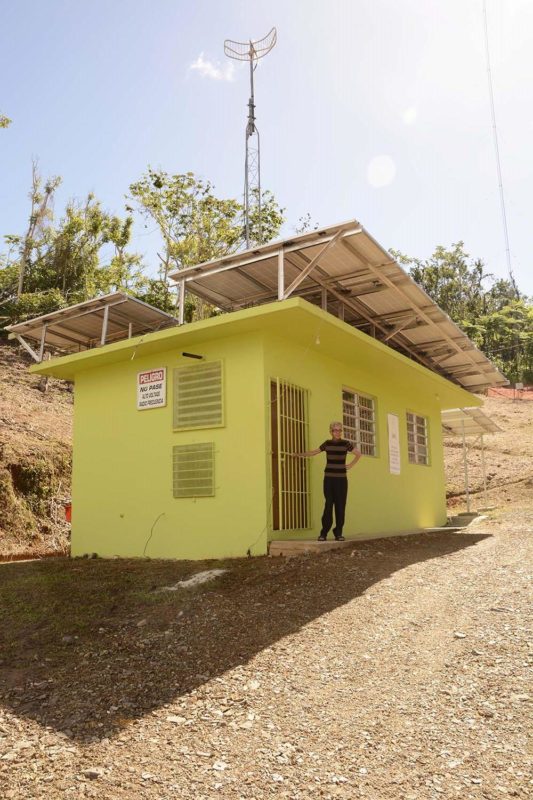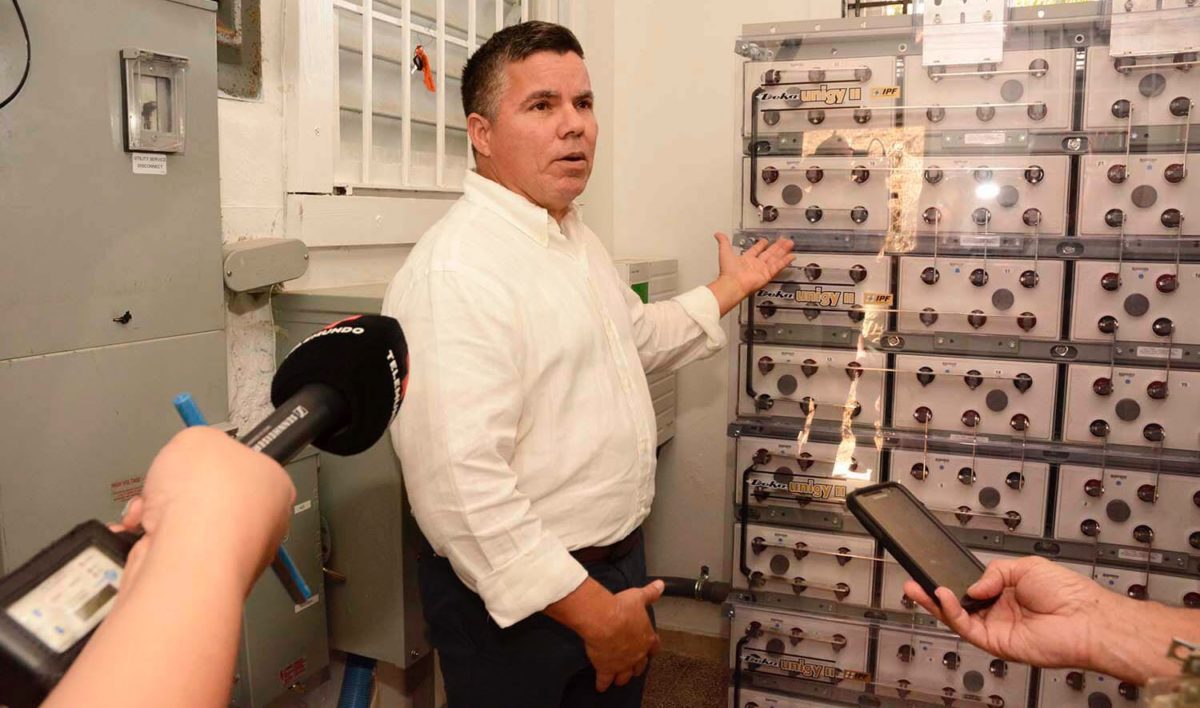Editor’s note: Maximo Solar is a solar installer with 70 employees that is active in the residential, commercial and industrial markets in Puerto Rico and Florida. The company has installed more than 6,500 PV systems to date, and its work in Puerto Rico in the aftermath of Hurricane Maria has given the company insights into the role of solar and energy storage in the recovery of the island.
pv magazine: Can you tell us a little bit about what is going on in terms of the return of electricity to Puerto Rico, and the general state of recovery?
Maximo Torres: The return of electricity to its previous state seems to be close to done. I would say that around 95% of Puerto Ricans are getting electricity to some extent right now. There are still thousands of people that have no electricity, and even that 95% still face regular outages, especially in rural areas with really damaged infrastructure, it is not for sure they will ever get electricity, so they are forced to consider microgrids and off-grid solutions. This has become of much interest, especially to many non-profit organizations that are looking to help.
pv magazine: In your estimate, what role has solar and battery storage played in terms of returning electricity to date, if any?
Torres: It has played a very important role. Before the hurricane, Puerto Rico was already a developing market for energy storage. Lots of people had acquired batteries for grid-tied systems – mostly dedicated to backup applications.
Since the hurricane, I would say 10 times more people compared to the existing inventories in Puerto Rico want to have some sort of batteries. Whether they will use it to reduce their use of a generator, or to provide some sort of power at their residence, or even for humanitarian relief.
In terms of percentage it is very hard to say, since most of this effort is coming from the consumer end. But it is likely to be significant, and easily over 30-40 people were able to survive the situation with the lack of electricity using solar energy with energy storage.
I also will add that probably one of the reasons is that the companies who are manufacturers of energy storage have got to Puerto Rico to increase the amount of inventories or product deliveries that they were sending to Puerto Rico. That also helped – the attention that Puerto Rico had. It helped to bring a lot more inventory, and we were able to collaborate with many installers, and to help more people without electricity.
pv magazine: It is interesting that you mention batteries. I notice that your business has increased eight-fold since Hurricane Maria hit. Are you selling many PV systems paired with batteries, and are these enabling residents to get power back before the grid recovers?
Torres: 99% of the sales are related to energy storage. Before the hurricane it was around 20%. Every customer who comes to our business is looking for energy storage. Even if they have electricity right now, they want to be prepared for any hurricanes.
We expect one of the heaviest hurricanes in 2018, so a lot of the resources are looking to invest in solar energy with batteries. We see a lot of people at the personal level looking for systems, now we are seeing a lot of the businesses looking to get prepared and to be able to manage resilience in a devastating situation, like the previous hurricane.
This situation has gotten a lot of energy storage manufacturers from the Australia, Hawaii, the United States and other places to bring their products to the market.

pv magazine: How much of this is due to preparation for another hurricane, and how much is to avoid the regular blackouts that the island is still suffering. It is possible to distinguish between the two in terms of the driver for sales?
Torres: I would say yes, 50-50. There is an increase of customers looking to have off-grid applications. Most of them, it could take years for them to have the local infrastructure.
But for more people, they want to use a combination of solar and the utility. So I see a good opportunity for integrating the resources where the consumer plays a big role in the energy infrastructure. Whether he is an investor, whether he is a consumer, or whether he is a participant in the process.
pv magazine: In reading some of the articles about your work, I notice that you have not only done systems for residences, but have also done a number of interesting installations, including the first solar-powered radio transmitter in the Caribbean. Can you talk about some of the other applications that you are supporting?
 Torres: We have a non-profit group, SomosSolar, we have a community effort to facilitate solar storage to community-related organizations. We are now uniting this effort with other non-profit organizations that have funds.
Torres: We have a non-profit group, SomosSolar, we have a community effort to facilitate solar storage to community-related organizations. We are now uniting this effort with other non-profit organizations that have funds.
Many of these non-profit organizations are raising these funds to provide food and water. That issue has been resolved. Now the main issue is to have storage to facilities, where they can sustain and be able to help the community: the elderly, the young, the kids and any of these non-profit organizations, community related, that are providing service to others.
Here is a little bit of this collaborative effort. First off all, towards the consumer, there is a real need for energy for basic needs after catastrophic events. Second, we are focused on community-related organizations that need to operate, so they can facilitate support to the community, as I mentioned to elderly, people that are in need of medical devices, people that are in needs of special attention, and energy plays a big role.
Next we are looking towards the continuity of businesses, and their ability to handle the regular business operations and to reach normality, and to be prepared for any catastrophic event.
pv magazine: What do you see for the future of solar and energy storage in Puerto Rico?
Torres: I see a lot of energy storage, and a lot of solar energy resources. We need to achieve integration, mostly through distributed energy projects near the consumer.
As energy storage technology continues to make a significant and growing contribution towards the supply of electricity, the regulatory framework needs to change with the changing needs of Puerto Rico.
The consumer participation as a player, as an investor, as a consumer, they must play a role to have multiple independent energy sources that can interact with each other, and definitely the utility, including microgrids, micro generation, net metering, and all the other forms of renewable energy.
pv magazine: It is interesting that you mention the regulatory framework. Can you talk about the state of policy for solar and storage in Puerto Rico right now, and what the most important steps would be to improve those policies?
Torres: It is very interesting that right before Maria, there was a solid foundation created for distributed energy. The situation with the hurricane only serves to speed up any of these regulatory frameworks.
What is needed is to fine tune. There are going to be more players in the situation, there is going to be financial participation from companies and even governments. So it is an effort just to get everything ready.
There is another issue that is going to affect everything, which is whether PREPA is going to be sold or not. That situation is very important to the whole picture. But definitely it is one of the factors. What is more important is how we are all part of this island an part of the USA where we want to be able to prepare, to contribute, and maximize the resources that we have received as an example, as a development model in other places.
pv magazine: Very interesting. So can you tell us more about structure of your company? What is the business relationship between SomosSolar and Maximo Solar?
Torres: SomosSolar is a foundation under Maximo Solar. It is our private non-profit where we direct our community efforts, where we contribute to people in need. We have been very successful for many years, and it is important that we give our community a little bit of the support that we gathered from the community and the customers.
We do run our Maximo Solar model a little bit different than most companies. We run as a family corporate way of doing business. We do have a presence here in Florida. We do have distribution, we do have retail directly to some customers, we have installations, we do manufacture battery cabinets and PV racking.
We believe that we are building model as a company where Puerto Rico can sustain itself from developing the capabilities for economic development, and become a bridge to other Latin American markets. What I mean by a bridge is between the technology of the USA and the implementation of projects into the rest of the Caribbean and the Latin markets.
pv magazine: Is there anything that we haven’t talked about that is important for our readers to know about what is going in Puerto Rico right now and your business?
Torres: It has come to my attention how much interest there is from non-profit organizations from all parts of the world to support the energy storage development in Puerto Rico. And I see a big opportunity to find a way to maximize those resources, and to integrate our local resources, to achieve as much as possible to the available funds.
Not a lot has resulted to the end-consumer yet. So it is important that all companies. So it is important that all the companies in Puerto Rico realize how important it is to support these organization and have them achieve the resiliency they are looking for, for this island.
-Interview conducted by Christian Roselund
This content is protected by copyright and may not be reused. If you want to cooperate with us and would like to reuse some of our content, please contact: editors@pv-magazine.com.









“Lots of people had acquired batteries for grid-tied systems – mostly dedicated to backup applications.” Er, aren’t grid tied systems explicitly NOT backup systems? When the grid goes down, grid tied inverters are legally required to cease functioning. (Anti-Islanding etc)
Adding energy storage to a grid tied solar system allows you to shut off the anti-islanding feature since the battery will absorb excess energy and protect line workers.